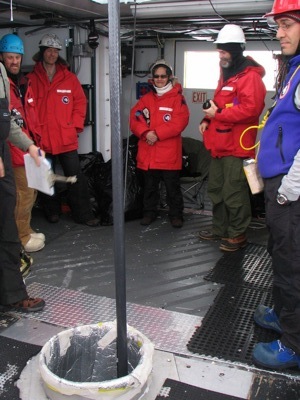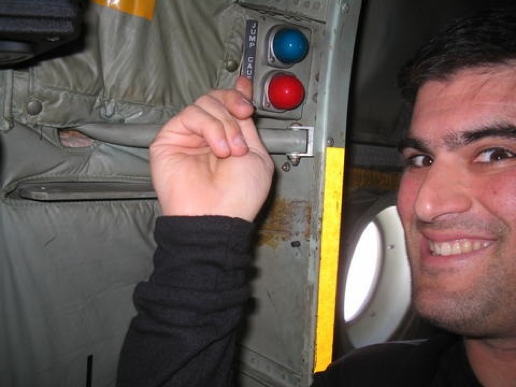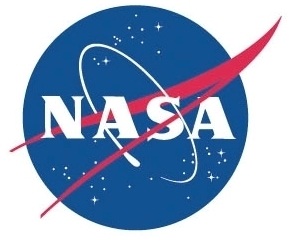The Cosmic Microwave Background (CMB) provides three strong but circumstantial pieces of evidence that the visible Universe was created by the superluminal inflation of a tiny volume of space:
- Near isotropy of the horizon
- Flatness of space
- Phase-synchronicity of acoustic oscillations in the early universe
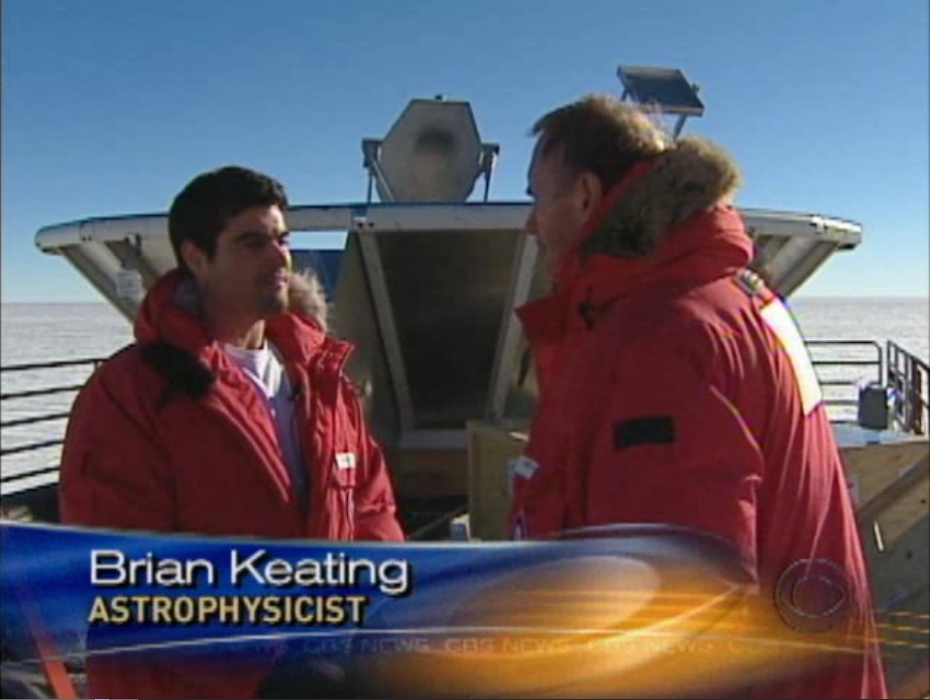
BICEP1 Science
The goal of better understanding the origins of the Universe requires probing this epoch of Inflation directly. The most promising probe of Inflation is the unique signature that the Gravitational Wave Background (GWB) imprints on the polarization of the CMB.
The amplitude of this signature depends on the energy-scale of Inflation. If the energy scale is typical of Grand Unification Theory (GUT, 10^16 GeV), the signature may be detectable.
The signature of the GWB-induced polarization is expected to be less than an rms amplitude of ~300 nK of the CMB; more than two orders of magnitude below the amplitude of the temperature anisotropies that have only recently been resolved over the full-sky by the Planck satellite.
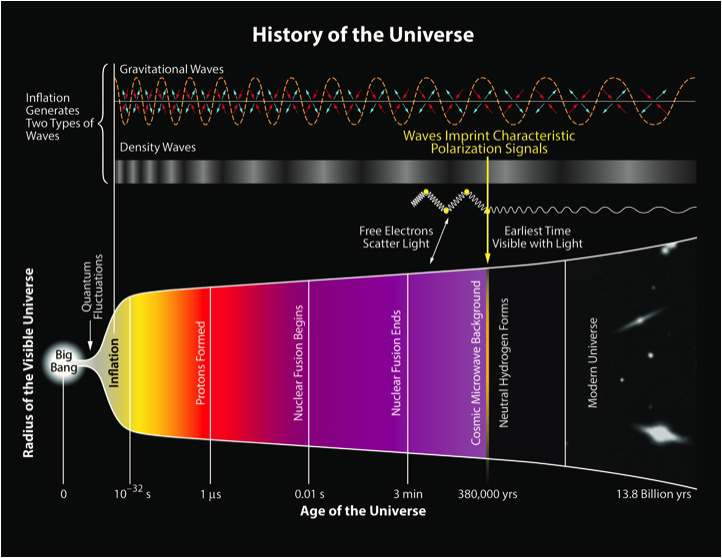
Detection will require only modest angular resolution (~ 1 deg.), but will require long integration (~3 years) on a restricted (~3%) and contiguous patch of sky.
Photo credits JPL.
BICEP1 Telescope
The six-month nights, extremely dry and stable weather, and the precise rotation of the sky about the zenith make South Pole Station the ideal terrestrial site for this ambitious project.
BICEP1 is a uniquely capable instrument for detecting the signature of the Gravitational Wave Background (GWB).
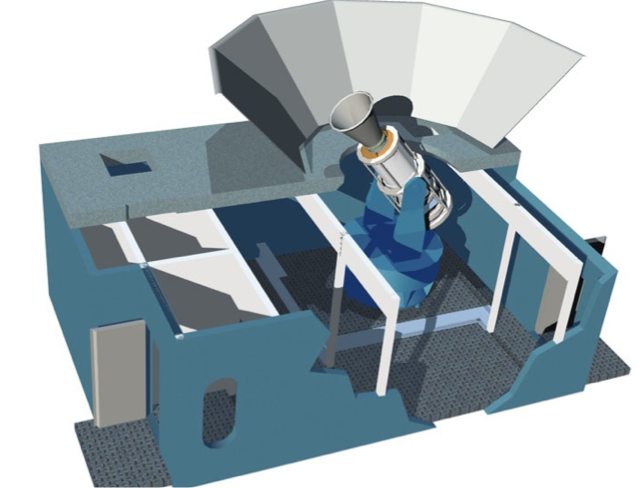
It began searching for the GWB in 2006 by:
- Pioneering an orders-of-magnitude improvement in this exciting new field
- Characterizing the diffuse astrophysical foregrounds which are of direct interest to Galactic astronomers
- Demonstrating new technologies and methodologies that promise to be of broad importance to millimeter-wave polarimetry
- Providing excellent training for graduate students and postdoctoral fellows in labs which have a very strong track-record in this regard.
BICEP1 Collaborators
Affliated Departments at UCSD
Collaborators
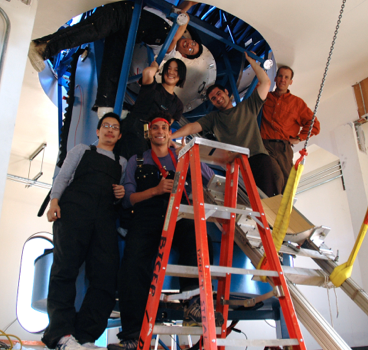
BICEP1 Papers
March 2014:
Degree-scale Cosmic Microwave Background Polarization Measurements from Three Years of BICEP1 Data, Barkats, D.; et. al., published in The Astrophysical Journal.December 2013:
Self-Calibration of BICEP1 Three-Year Data and Constraints on Astrophysical Polarization Rotation, Kaufman, J. P.; et. al., published in Physics Review D.March 2013:
Scientific Verification of Faraday Rotation Modulators: Detection of Diffuse Polarized Galactic Emission, Moyerman, S.; et. al., published in The Astrophysical Journal.November 2011:
A Millimeter-wave Galactic Plane Survey with the BICEP Polarimeter, Bierman, E. M.; et. al., published in The Astrophysical Journal.July 2010:
Absolute polarization angle calibration using polarized diffuse Galactic emission observed by BICEP, Matsumura, T.; et. al., published in SPIE.March 2010:
Characterization of the BICEP Telescope for High-precision Cosmic Microwave Background Polarimetry, Takahashi, Y. D.; et. al., published in The Astrophysical Journal.March 2010:
Measurement of Cosmic Microwave Background Polarization Power Spectra from Two Years of BICEP Data, Chiang, H. C.; et. al., published in The Astrophysical Journal.August 2008:
CMB polarimetry with BICEP: instrument characterization, calibration, and performance, Takahashi, Y. D.; et. al., published in SPIE.July 2006:
The Robinson Gravitational Wave Background Telescope (BICEP): a bolometric large angular scale CMB polarimeter, Yoon, K. W.; et. al., published in SPIE.February 2003:
BICEP: a large angular scale CMB polarimeter, Keating, B. G.; et. al., published in SPIE.
BICEP1 Travelogue
Research and life at the South Pole can be difficult, but we've found ways to adapt.

